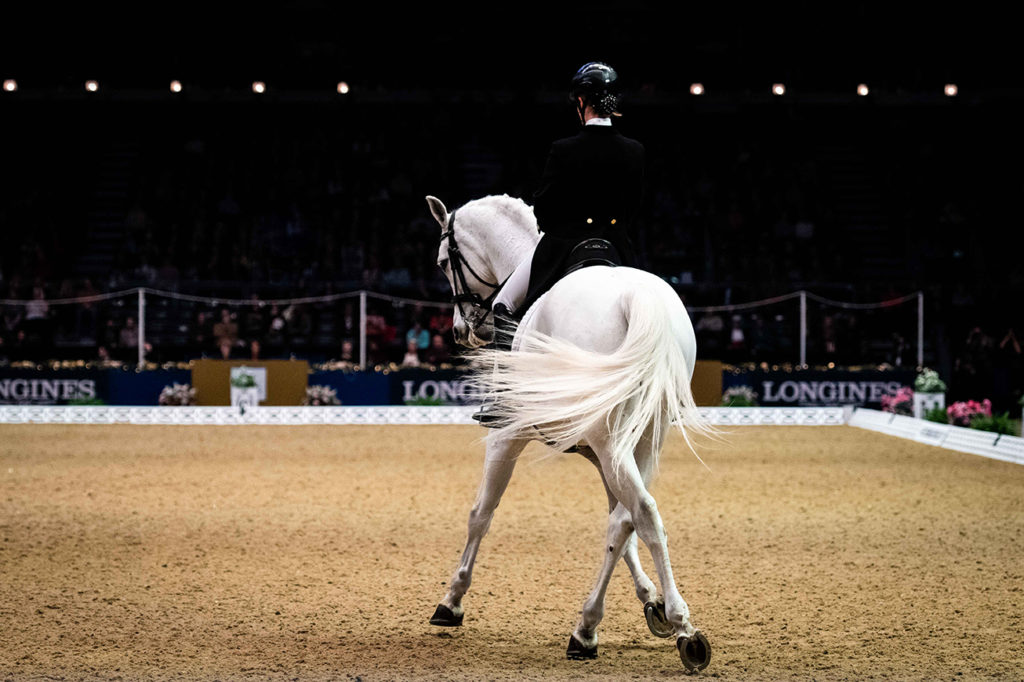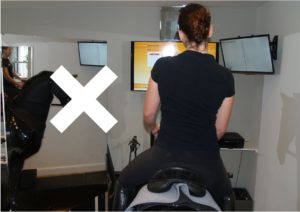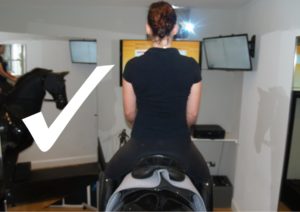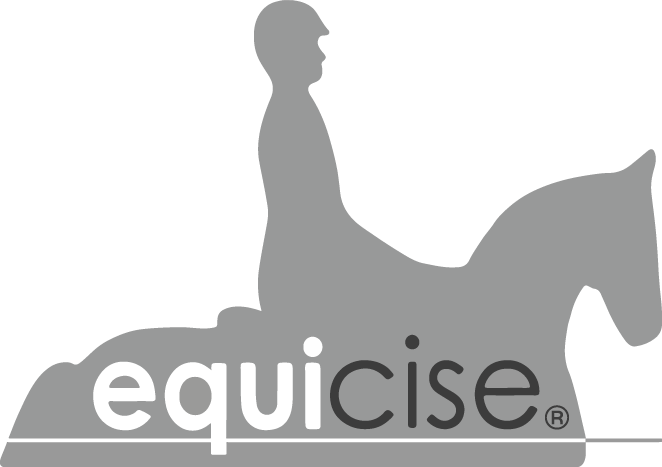13 Jun 8. Learning Weight Aids
 In most of our previous articles, we have mentioned the importance of developing an independent seat, a prerequisite for becoming the best rider you can be. We have discussed how you can improve your upper and lower body position, become more balanced in the saddle and ensure you apply the correct leg and rein aids, but understanding and being able to use weight aids properly are also key to communicating well with your horse.
In most of our previous articles, we have mentioned the importance of developing an independent seat, a prerequisite for becoming the best rider you can be. We have discussed how you can improve your upper and lower body position, become more balanced in the saddle and ensure you apply the correct leg and rein aids, but understanding and being able to use weight aids properly are also key to communicating well with your horse.
Unless you have mastered an independent seat, however, you will be unable to apply weight aids correctly, which will confuse your horse and can countermand your leg and rein aids when you are asking for a particular movement. A rider with an independent seat, on the other hand, will be able to feel what the horse’s body is doing, and to choose and apply the best set of aids to achieve the desired outcome.
To recap, an independent seat allows you to sit loosely on your horse, with relaxed muscles and without any tension or gripping; because you are balanced, you will be able to align your centre of gravity with your horse’s centre of gravity, enabling you to follow your horse’s movement in any pace. As a result, even subtle shifts in your seat bones will be felt by your horse, allowing it to understand more clearly what you are asking it to do.
So what do we mean by weight aids? Basically, we are talking about increasing or decreasing the weight in one or both of your seat bones. But being able to increase or decrease the weight on each seat bone independently is not easy and requires strong and flexible abdominal, rib and back muscles. As we have discussed before, riding on its own is not sufficient exercise to develop the muscles you need if you are going to reach your full potential as a rider, so you need first to be sure that you are aware of your body’s strengths and weaknesses and so can address any issues that make you uneven when you are in the saddle.
We have talked in earlier articles about how hard it may be for you to assess correctly how evenly you sit – what may feel like a perfect position to the rider could well not be, but asking your instructor, using mirrors in an indoor school or practising on an equine simulator are all good ways to form an objective view and work on any problem areas. Another way to check if you are correctly positioned in the saddle is to pay attention to your horse’s behaviour as it will typically try to compensate for any imbalance in the rider. So if, for example, it tends to carry its head more to one side and to move in that direction, it may be an indication that you are sitting more heavily on one seat bone and that your horse is seeking to realign its centre of gravity.
Let’s suppose you have developed an independent seat: now you need to practise engaging the muscles on one side of your lower abdomen and back in such a way that you slightly lengthen your torso on the relevant side. You should bear in mind that if you are decreasing the weight in one seat bone, you are not lifting it off the saddle as such a movement is not only much bigger than is required but is also destabilising and will result in the other side of your body collapsing. It needs only a very small movement of your hip, while you keep your upper body still and centred.
It is often the case that riders understand the theory of weight aids well before they are physically able to apply them correctly. You should not be despondent if you are struggling and find that your attempts to increase the weight on one seat bone result in your body leaning to that side as this is a common fault but one which, with determination and practice, can be overcome.
The EQUICISE is an excellent tool for teaching you about weight aids. It has four seat sensors directly under the saddle which show the centre of gravity and alignment of the rider and how you change during movements, with very accurate results displayed on the screen in front of you. A common mistake when learning to use weight aids is for riders to lean with their body to try and achieve the desired result, but this can unbalance and confuse the horse. By checking in the mirrors that surround you on the EQUICISE, at both sides and at the front and rear, you can make sure that you are completely central in the saddle as you work through your weight aid training with your instructor. Feedback from the sensors will show when you have managed to achieve a correct weight aid, so you will know instantly when you have got it right. And it will not do so unless you are completely accurate — there is no scope for cheating!
Because it is such a small internal movement that helps you achieve the desired result, it is often hard for your instructor to be able to spot if you are doing it right or not on a real horse, which is why the EQUICISE is such an invaluable aid in helping you to learn. You are able to practise in all paces and with and without stirrups. It may take a while for you to ‘tune into’ your body and find your weight aids and you will probably find it harder on one side (everybody finds one side easier than the other), but do not let that get you down: once you crack it, your horse will respond in ways you never thought possible.
Book a LESSON and ask your EQUICISE instructor to help you learn how to apply weight aids correctly.
Practise this on the equicise simulator


Use 'Instruction Ride - Auto Training 2 minute’ programme. Press reset. Position mirrors either side of you. In order to check how aligned your upper body is it is a good idea to put some white tape around your waist, shoulder blade to shoulder blade and down your spine (you may need to ask your instructor or a friend to help you do this). Press the 2 minute test button and, as you ride through the test, keep looking at the top left chart which shows your weight distribution either side of the horse's spine. As it goes through the programme in walk, trot and canter, practise putting your weight on alternate seat bones for approximately three to four seconds on each side and see if you can show a reading on the chart while maintaining level shoulders and a vertical spine. This is a fantastic exercise to practise on the simulator; although you may think it an impossible task to start with, if you persist and become more aware of how your body is behaving, you will be amazed at how much you will improve.




